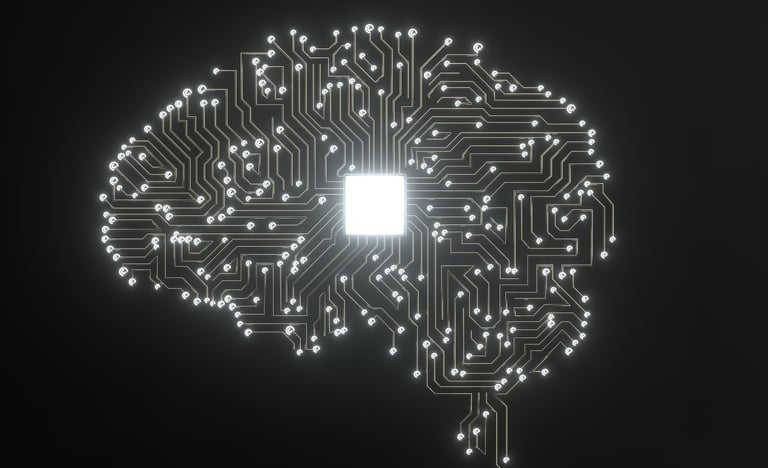Harnessing the Power of Generative AI in Cloud Technologies
Generative Artificial Intelligence (AI) is poised to revolutionize the way we interact with technology and generate new content. In this tech blog, we'll explore the exciting world of generative AI and its applications in cloud technologies. From creating realistic images and text to enhancing virtual environments and simulations, generative AI is unlocking new possibilities for innovation and creativity in the cloud.
CLOUD TECHNOLOGIESGENERATIVE AI


Generative AI, fueled by advanced machine learning algorithms like Generative Adversarial Networks (GANs), represents a groundbreaking leap in the realm of artificial intelligence. It empowers computers to not merely analyze existing data, but to create entirely new content that mirrors the patterns and characteristics of the original data. Unlike traditional AI models, which are primarily designed for classification or prediction tasks, generative AI focuses on the innovative task of crafting new content from scratch, spanning images, text, and even music.
Exploring Applications of Generative AI in Cloud Technologies:
Image Generation: Within cloud environments, generative AI models wield their creative prowess to craft stunningly realistic images, artwork, and graphics. These creations find utility across various domains such as digital media, design, and virtual environments. For instance, in the realm of entertainment, generative AI breathes life into video games, movies, and virtual reality simulations by conjuring synthetic depictions of landscapes, structures, and even lifelike characters.
Text Generation: Generative AI's capabilities extend to the realm of textual content creation, where it excels in producing human-like text derived from input prompts or training data. This functionality finds diverse applications in natural language processing, content generation, and chatbots. From crafting compelling conversational dialogues to generating captivating articles or narratives, generative AI serves as an indispensable tool for content creators and developers operating within cloud environments.
Virtual Environments: Generative AI elevates virtual environments and simulations to unprecedented levels of realism through the creation of lifelike 3D models, textures, and animations. Whether in cloud-based gaming platforms or virtual reality applications, generative AI transforms abstract concepts into immersive settings, characters, and objects, offering users unforgettable and engaging interactive experiences.
Data Augmentation: In the realm of machine learning and data analytics, generative AI plays a crucial role in augmenting existing datasets by generating synthetic data samples that closely resemble real-world instances. This augmentation serves to enhance model performance, mitigate overfitting, and address data scarcity issues. By generating synthetic images, text, or other data types, generative AI supplements training datasets, leading to improved model accuracy and robustness.
Generative AI Revolutionizing Industries:
Logistics: Generative AI can be used to optimize route planning and scheduling for transportation fleets. By generating realistic simulations of traffic patterns and delivery scenarios, logistics companies can identify the most efficient routes and minimize delivery times. Additionally, generative AI can help in designing and optimizing warehouse layouts for maximum efficiency in storage and retrieval operations.
Banking and Insurance: Generative AI can aid in fraud detection and risk assessment by generating synthetic financial transaction data and customer profiles. It can also be utilized for algorithmic trading and portfolio optimization, enabling financial institutions to make data-driven investment decisions.
Medical: In the medical field, generative AI can assist in medical imaging analysis, drug discovery, and personalized medicine. By generating synthetic images or patient data, researchers can augment limited datasets and train more accurate predictive models for diagnosing diseases or predicting treatment outcomes. Generative AI can also be used to generate synthetic patient data for training medical professionals in virtual simulations.
Manufacturing: Generative AI can revolutionize product design and prototyping in the manufacturing industry. By generating realistic 3D models based on input specifications and design constraints, manufacturers can accelerate the product development process and reduce time-to-market. Generative AI can also be used to optimize manufacturing processes by simulating different production scenarios and identifying potential bottlenecks or quality issues.
Hospitality: In the hospitality sector, generative AI can enhance customer experiences through personalized recommendations and content generation. For example, hotels can use generative AI to create customized travel itineraries based on guest preferences and past behavior. Generative AI can also be used to generate virtual tours of hotel properties or simulate different room configurations to help guests make informed booking decisions.
Retail: Generative AI can revolutionize product recommendation systems and virtual shopping experiences in the retail industry. By generating personalized product recommendations based on individual preferences and browsing history, retailers can enhance customer engagement and drive sales. Generative AI can also be used to create virtual try-on experiences for clothing and accessories, allowing customers to visualize how products will look before making a purchase.
Generative AI holds immense potential to revolutionize various industries, offering unparalleled opportunities for innovation, optimization, and enhanced customer engagement within cloud environments. By harnessing the creative capabilities of generative AI, organizations can unlock new avenues for growth and success in the digital age.
